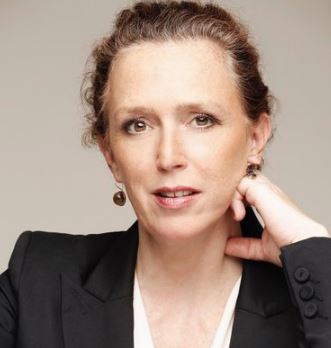Marie-Sophie Houis-Valletoux, Partner PMP and Olivier Milcamps, in an article written by 4 hands, explain their vision of “how to give new life to complementary health insurance”.
How to revitalize complementary health insurance?
As we approach the 75th anniversary of Social Security to which the French remain extremely attached, the growing doubts about the durability or usefulness of complementary organizations of voluntary health insurance (OCAM).
Despite an unprecedented movement towards concentration in the sector – the number of OCAMs increasing from 1,702 in 2001 to 474 in 2017 – and an increase in their size – the 50 largest collected 75% of contributions in 2017 against 54% in 2006 – allowing them to generate significant economies of scale to invest in new services to policyholders, their clients’ mistrust of them has never been so strong: 69% of the 6,680 opinions collected by Opinion Assurance on their OCAMs are indeed say they are dissatisfied or even very dissatisfied.
Compulsory supplementary health insurance, supplementary health insurers delegated to management and tax collectors… An inescapable trend?
In addition to the large number of OCAMs, France stands out strongly from other European countries by their much greater weight in financing the consumption of medical care and goods (CSBM), but also by the hyper-regulation of their activity.
In 2017, the OCAMs financed 13.2% of the CSBM against 12.3% in 2002 after having peaked at 13.7% in 2013 for an average amount of services of nearly €500 per person in France, while their weight is between 3% and 8% in Germany, Switzerland and the Netherlands, for a lower average amount of benefits per person, + – €300.
In these countries, the optional health insurance activity is very poorly regulated, insurers being able, for example, to practice medical selection and freely define their basket of care and reimbursement conditions.
Unlike in France, their activity is increasingly regulated since the establishment of the CMU-C, effective 1st January 2000, de facto“Consecrated” the OCAMs as an essential player in social protection. Successive governments, whatever their obedience, have not ceased to contribute to a progressive universalization of complementary health which has accelerated in recent years; we can note the Evin law (1989), solidarity and responsible contract (2004), solvency 2 (2016), generalization of complementary company health (2016) which obliges the employer to offer employees additional health coverage and Fund it up to a minimum of 50%… Since 2016, the OCAMs have been forced to apply 54 new regulations, ie an impact of at least 3% on their management fees. In the short term, we cannot foresee a reversal of this trend: 100% Health (2019-2021), infra-annual termination (2020),CMU-C contributory (2020), management of management costs (we are talking about it), regulation of health cover for seniors (we will perhaps talk about it again) …
This does not prevent the remainder dependent on households from continuing to increase.
In addition to strongly supervising their activity, the public authorities have also transformed the OCAMs into tax collectors: today, the taxes collected on optional health insurance contracts represent 13.27% of the contributions of responsible contracts (and 20, 27% for non-responsible contracts) against 1.75% in 1999, ie a tax revenue of 4.6 billion € for responsible contracts but less than 150 million € for non-responsible contracts.
Can this trend, which seems strongly rooted in the country’s senior administration, be sustainable? What if the health system needed more and more space for freedom, including pricing?
What if the real question was no longer to make the remainder dependent on curative health procedures solvent in the context of access to care that is still very poorly organized / regulated?
At the same time, we note that the strong evolutions at work on the side of the healthcare supply are hardly compatible with the current funding system. Among these developments, 3 are very structuring.
- The epidemiological transition and the predominance of chronic diseases in the CSBM: these diseases now concern 35% of the population, concentrate nearly 70% of expenditure and mobilize nearly 4/5 of the annual growth in health expenditure. Above all, according to the WHO and INCa, at least 40% of these chronic pathologies and cancers could be avoided if we changed our individual behaviors (better diet and more physical activity in particular). Not to mention that certain pathologies such as cancer are becoming chronic diseases, while the number of new cases is increasing each year due in particular to the aging of the population.
- The ambulatory shift in hospitals: initiated more than 20 years ago in surgery (with the development of outpatient surgery, which should represent 70% of surgical acts by 2022 but for which France continues to show a significant delay compared to other OECD countries), this break in the organization of care is developing strongly in medicine and also affecting follow-up and rehabilitation care. For example, in oncology, oral chemotherapy should represent 50% of chemotherapy in 2020 against 25% today, not to mention that an increasing share (15% against 3% today) of intravenous chemotherapy can also be done home.This development requires a major adaptation of the organization of the patient care pathway in order to better link the city and the hospital, not to mention the need to develop therapeutic education for patients to strengthen their adherence to treatment. More generally, the need to reduce borders and facilitate bridges between city medicine and hospitals and the issue of creating multidisciplinary structures for comprehensive care of the population are key issues in meeting the challenges. health that awaits us.the need to reduce borders and facilitate bridges between city medicine and hospitals and the challenge of creating multidisciplinary structures for comprehensive care of the population are key issues in responding to the health challenges that await us .the need to reduce borders and facilitate bridges between city medicine and hospitals and the challenge of creating multidisciplinary structures for comprehensive care of the population are key issues in responding to the health challenges that await us .
- A very sharp increase in the cost of new technologies as so many opportunities for more efficient care of individuals. For example, to meet the health needs of the population and allow them to benefit from the latest scientific knowledge, it would thus be necessary to at least double the number of heavy equipment platforms in imaging, not to mention the significant development of radiology. interventional. Another example, immunotherapy: faced with the cost of these treatments, health insurance decides, for example, not to reimburse them (like Xofigo in prostate cancer, treatment by injection which costs €30,000 yet reimbursed in 23 others. countries) or is slow to do so (such as Keytruda in lung cancer, the treatment of which costs €6,000 per month,eligible for reimbursement by health insurance 18 months after Germany or Belgium). During this time, the reimbursement rules imposed on the OCAM for optical, hearing aid and dental positions are considerably reinforced by strongly involving health professionals and insurers.
In this context, it is legitimate to wonder how the Public Authorities will be able to cope with the mechanical growth of frequent and inexpensive care and infrequent and very expensive care … the supervision and the growing generalization of complementary health which may be sufficient to solve this difficult equation.
The question of prevention (primary / secondary / tertiary) undoubtedly constitutes an essential key to attempting to resolve this complex equation and yet nothing or little has been done at this stage to encourage health professionals and insured parties to take part in its development.
We are seeing the progressive exhaustion of the fabulous promises of our system:
- “I go where I want when I want … but I don’t know where to go and the supply is insufficient in relation to the demand”
- “My health is free … but complementary health is more and more expensive, I have more and more expenses that remain my responsibility and certain treatments are prohibited to me because they are not reimbursed”
A new era for the OCAM around the search for more efficient healthcare solutions?
In this context, the OCAMs undoubtedly have a role to play in helping to imagine and implement a new health system both in terms of supply and financing, the two being closely linked. The historical players in complementary health, mutual funds and provident institutions have developed two essential tools:
- Social action, a response in the service of solidarity;
- Health structures (book III of mutuals, EHPAD of IP), an alternative to private and public health offers.
These players have also developed service offers around health and personal protection guarantees, both collectively and individually, with the aim of protecting the health capital of their beneficiaries.
At the same time, they questioned the issues of risk control for the benefit of policyholders and financiers with particular attention to the conditions of use (useful / known / accessible / simple) and economic sustainability (which pay and for what?).
Undoubtedly the right timing for the OCAMs, whose movement of concentration constitutes an opportunity to build groups with the means to consider and deploy new approaches, to help imagine a new health care system around from:
- The emphasis on prevention where the current system is focused on the curative with a model to measure and exploit the savings made;
- Orientation of individuals in the health care system;
- The development of multidisciplinary structures supporting individuals in continuity …
- questioning the historic break in our healthcare system between city medicine and hospital;
- allowing the overall care of patients with chronic pathologies;
- The implementation of mechanisms allowing both insureds and health professionals to be engaged in an economy of results and no longer of means;
- The exploitation of the potential linked to new technologies, and in particular digital, data and Artificial Intelligence in the service of more personalized and more efficient care;
- Exploitation of all possibilities in terms of financing: expenditure / credit / insurance / savings
Reasons to wait for the powerful encounter between needs and capacities!

Marie-Sophie Houis-Valletoux






